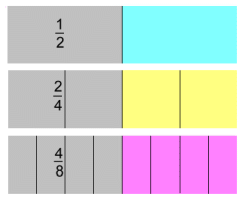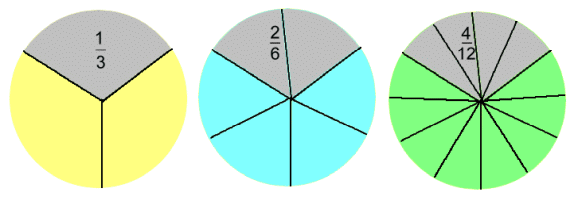  1: Equivalent Fractions Fractions are equivalent if they represent the same amount. They're equal For example, here are some equivalent (equal) fractions:  In picture form, you can see why they're equal: 
You can also recognize equivalent fractions numerically: If you can divide the numerator and denominator by the same number, you will get a new fraction that's equivalent: 
 Similarly, if you can multiply both the numerator and denominator by the same number to get a second fraction, that new fraction will be equivalent.  
In either case, the pairs of fractions are equivalent; they're equal, and represent the same amount. Let's look at another example:  The segments are clearly the same size. The three fractions represent the same amounts. Here are the three equivalent fractions:  Can you see that:
Now let's look at reducing a fraction ... |